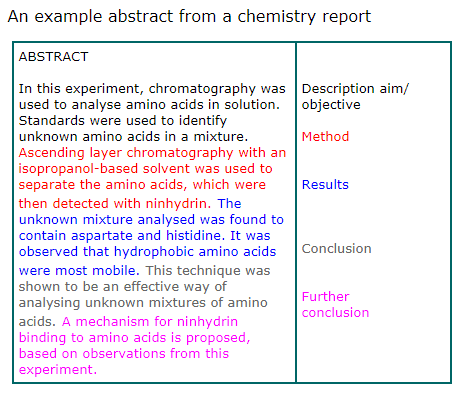


But if you want your peers, colleagues, or students to read it, you need to put some more effort into crafting an effective abstract. Let’s find out how to do it.
It’s a summary of a scientific paper, intended to summarize the research project, its purpose, achieved results, and conclusions. It gives a good idea of what’s inside the paper, but you have to read the whole thing. A more formal definition from Wikipedia: An abstract is a summary of a research article, thesis, review, conference proceeding, or any in-depth analysis of a particular subject and is often used to help the reader quickly find out the paper’s purpose.
“Somewhere, something incredible is waiting to be known.” – Carl Sagan

Here are a couple of rules to follow if you’re preparing to submit your work for publication:
A good abstract can go a long way in advancing your scientific career. The organizers of the event will review it in every detail and select your article for a presentation based on its quality. It all depends on the caliber of the event, but for the well-attended ones, your abstract will make or break your chances of presenting to a big audience. People who approve articles for presentation want the audience to be engaged and will accept only the highest quality material.
Here you can find six examples of scientific abstracts written for a presentation. And here you can find a great article, about abstracts for a presentation, written by a Ph.D. with a 90% acceptance rate. And if you need to create a poster out of your abstract, here’s a great guide you can check as well as some amazing examples.
Pagel, J. F.; Vann, B. H. The effects of dreaming on awake behavior. Dreaming: Journal of the Association for the Study of Dreams. Vol 2(4)229-237, Dec 1992. Abstract: Reports of the incorporation of dream mentation into a spectrum of awake behaviors were obtained from a heterogeneous awake population group through the utilization of self-reporting questionnaires (N=265). Results were analyzed to determine associations between age, gender, race, and the dream use variables. Significantly higher dream use was found in females for a majority of behaviors, and a negative correlation was found between increasing age and all dream questions studied. No significant racial/ethnic variation was found in the responses of the sample. These findings suggest that such a sociological approach to the study of the effects of dream mentation on awake behavior can provide insight into the sleep/dream states. Keywords: dream; dream use; behavior; age; gender; race; sleep; questionnaire. Here are more examples of abstracts from the University of Wisconsin. And from another scientific paper about dreams (with the actual paper included below).
As you can see, writing a solid summary of your scientific paper is straightforward. I hope that now you have a better understanding of the process, and will accomplish great things in the scientific community. Next up, you may want to explore a list of the top educational book publishers.

Get your free PDF report: Download your guide to 80+ AI marketing tools and learn how to thrive as a marketer in the digital era.

Hey there, welcome to my blog! I'm a full-time entrepreneur building two companies, a digital marketer, and a content creator with 10+ years of experience. I started RafalReyzer.com to provide you with great tools and strategies you can use to become a proficient digital marketer and achieve freedom through online creativity. My site is a one-stop shop for digital marketers, and content enthusiasts who want to be independent, earn more money, and create beautiful things. Explore my journey here, and don't miss out on my AI Marketing Mastery online course.
Disclosure: This website contains affiliate links, which means that if you click on a product link, I may receive a commission. As an Amazon Associate I earn from qualifying purchases.